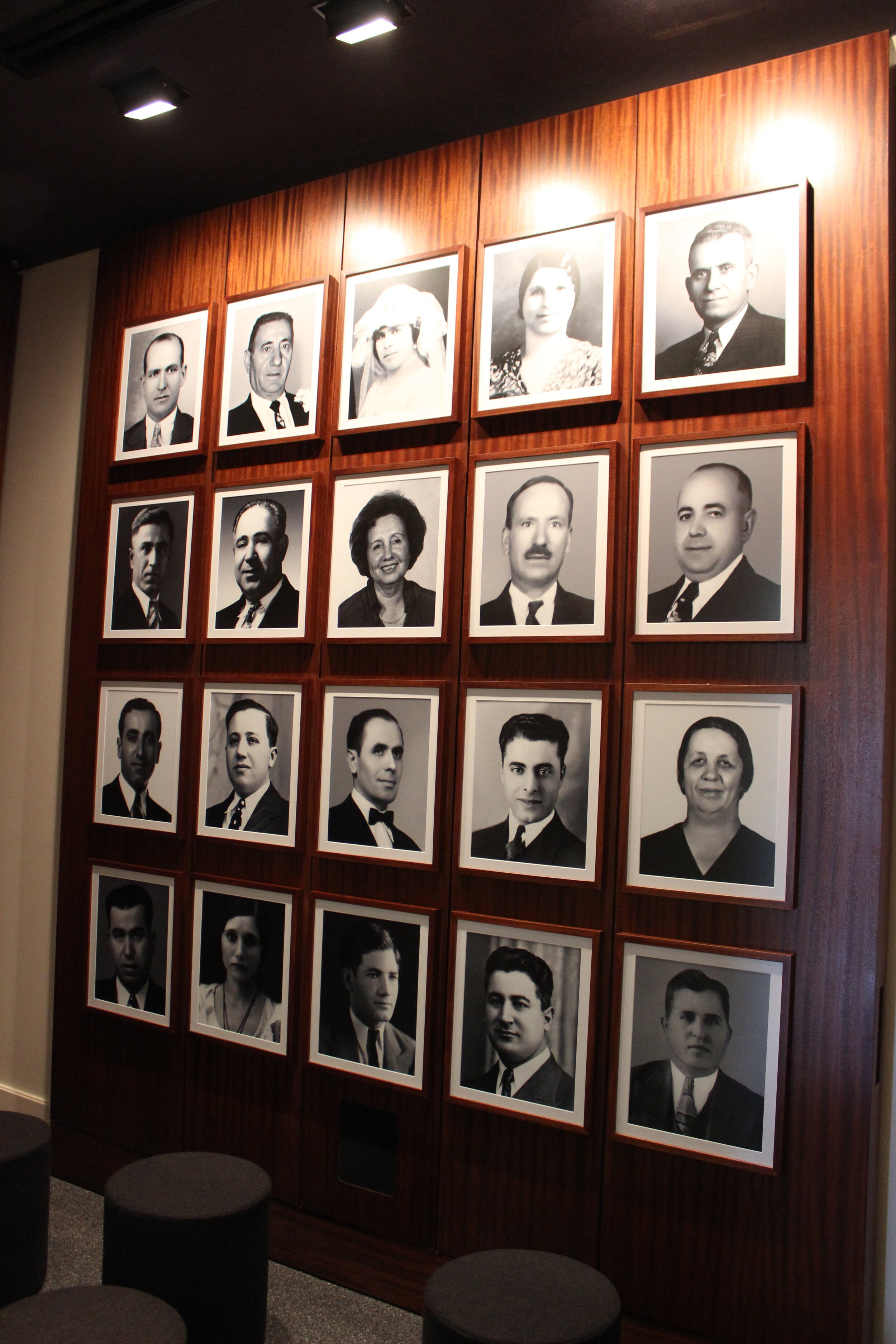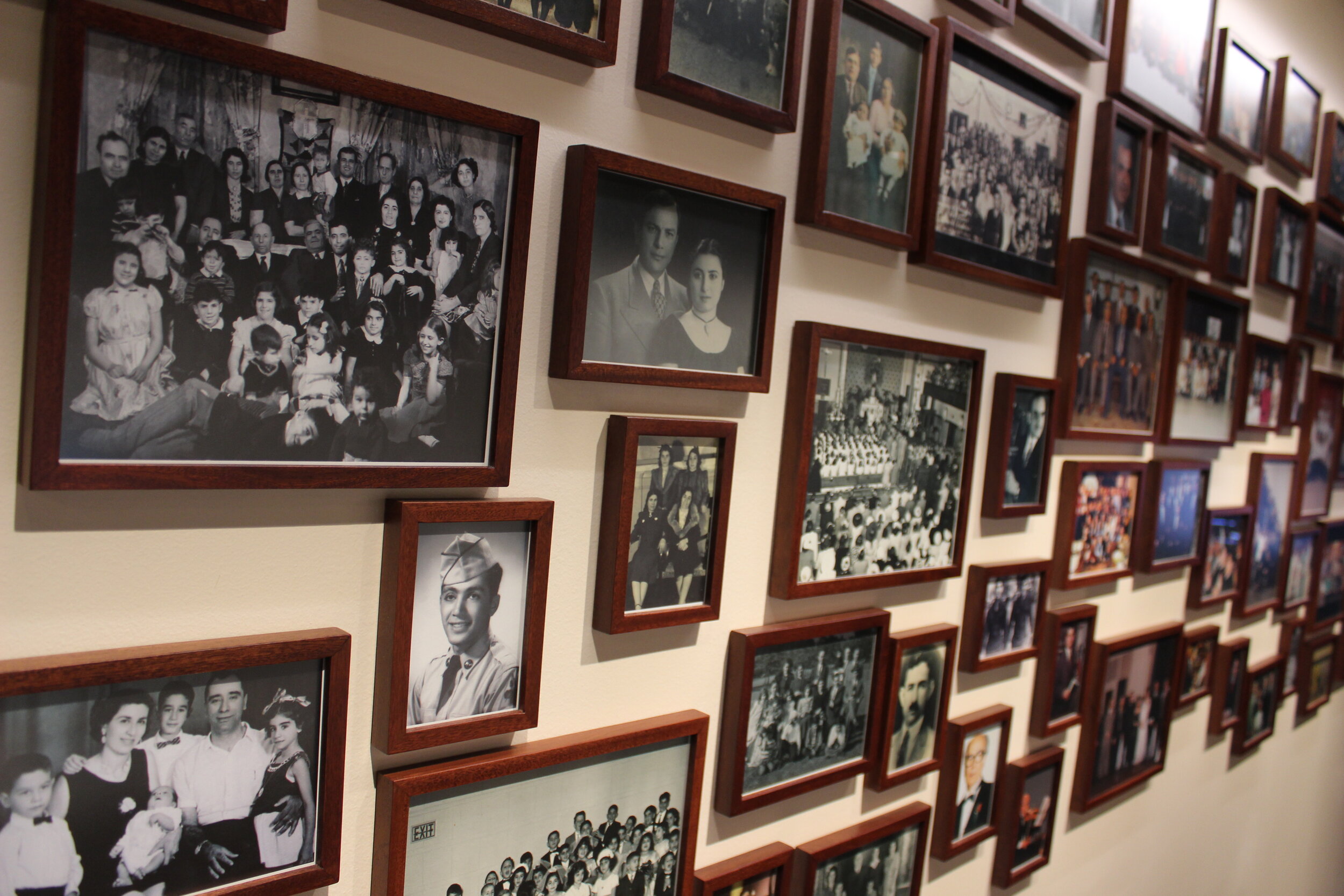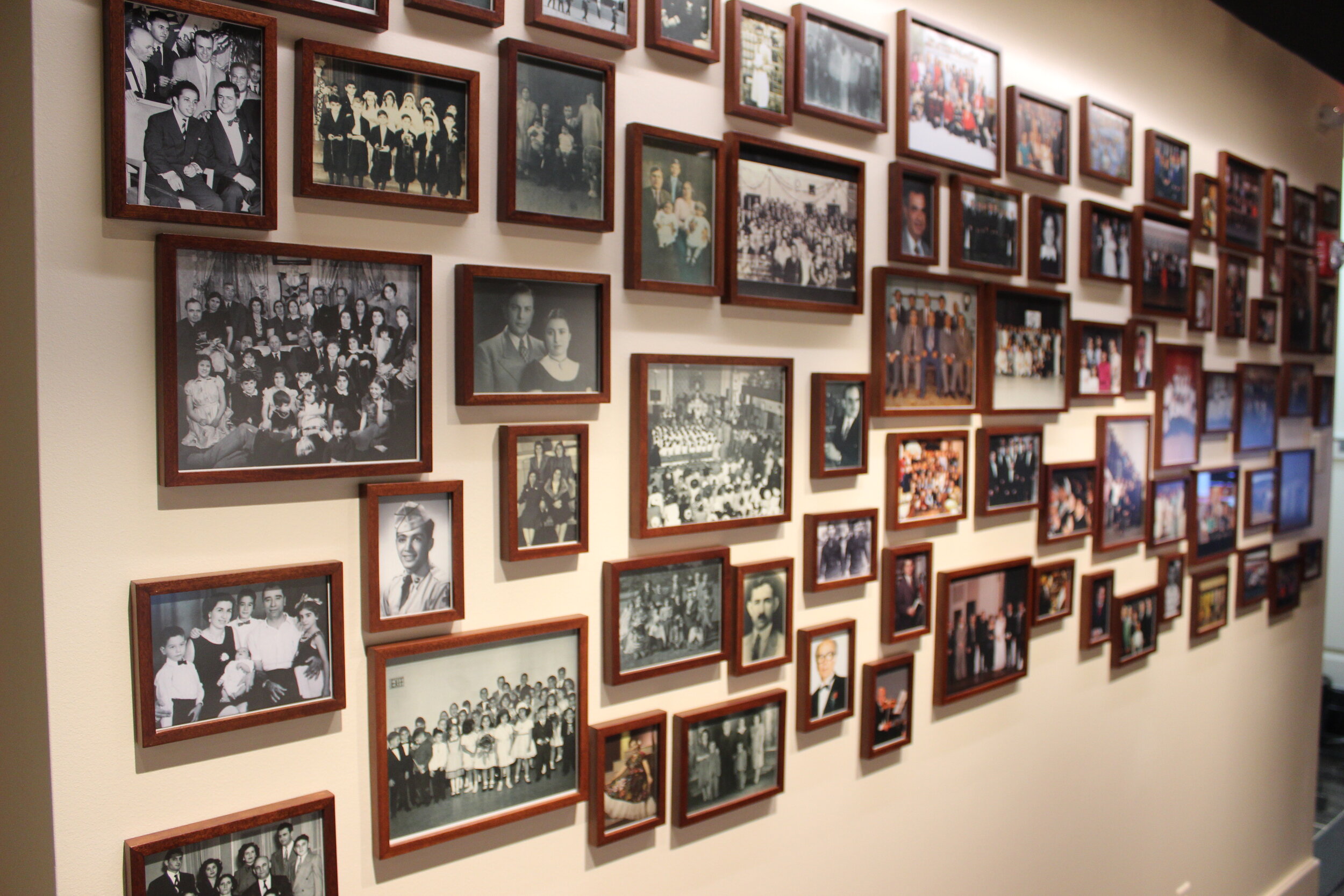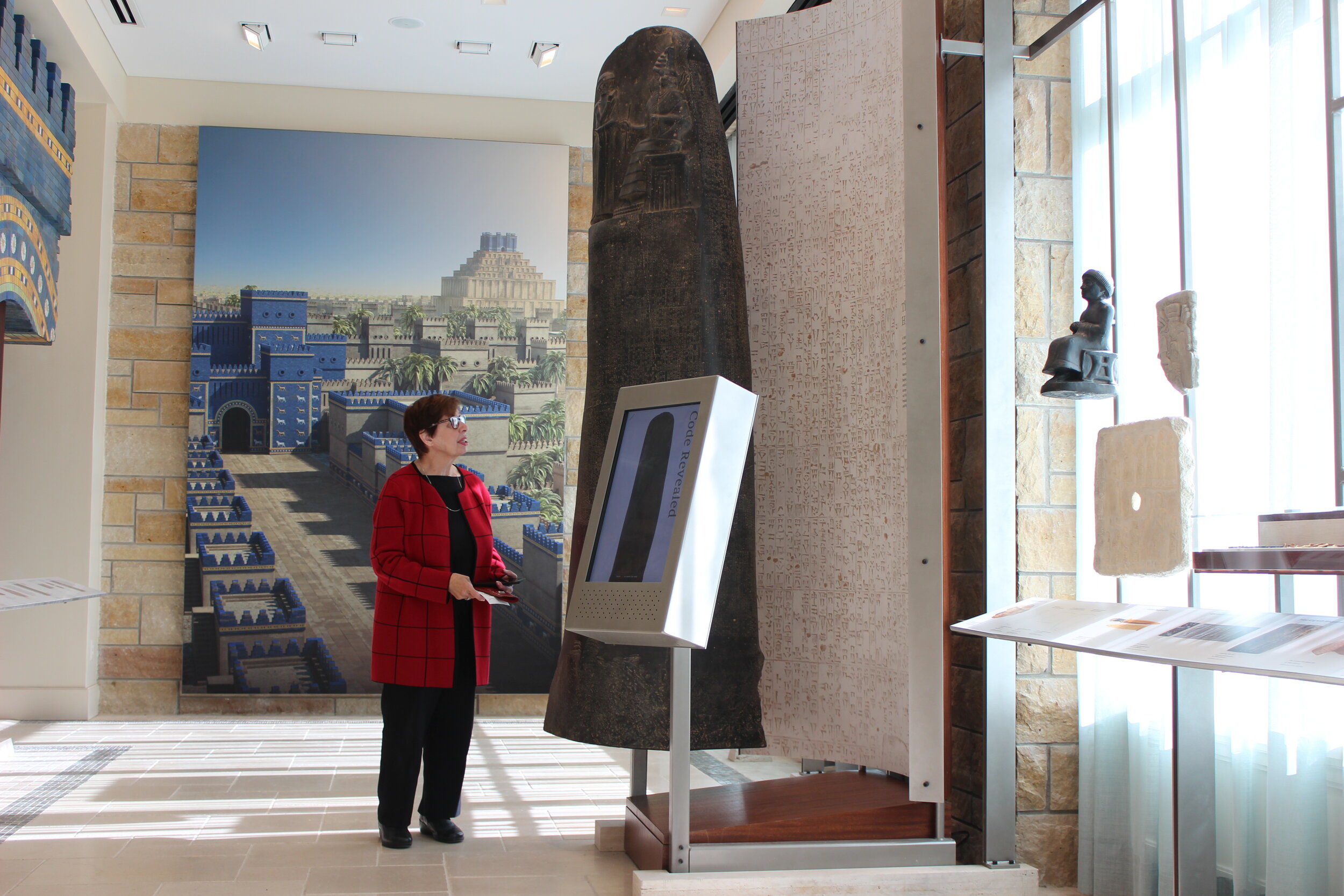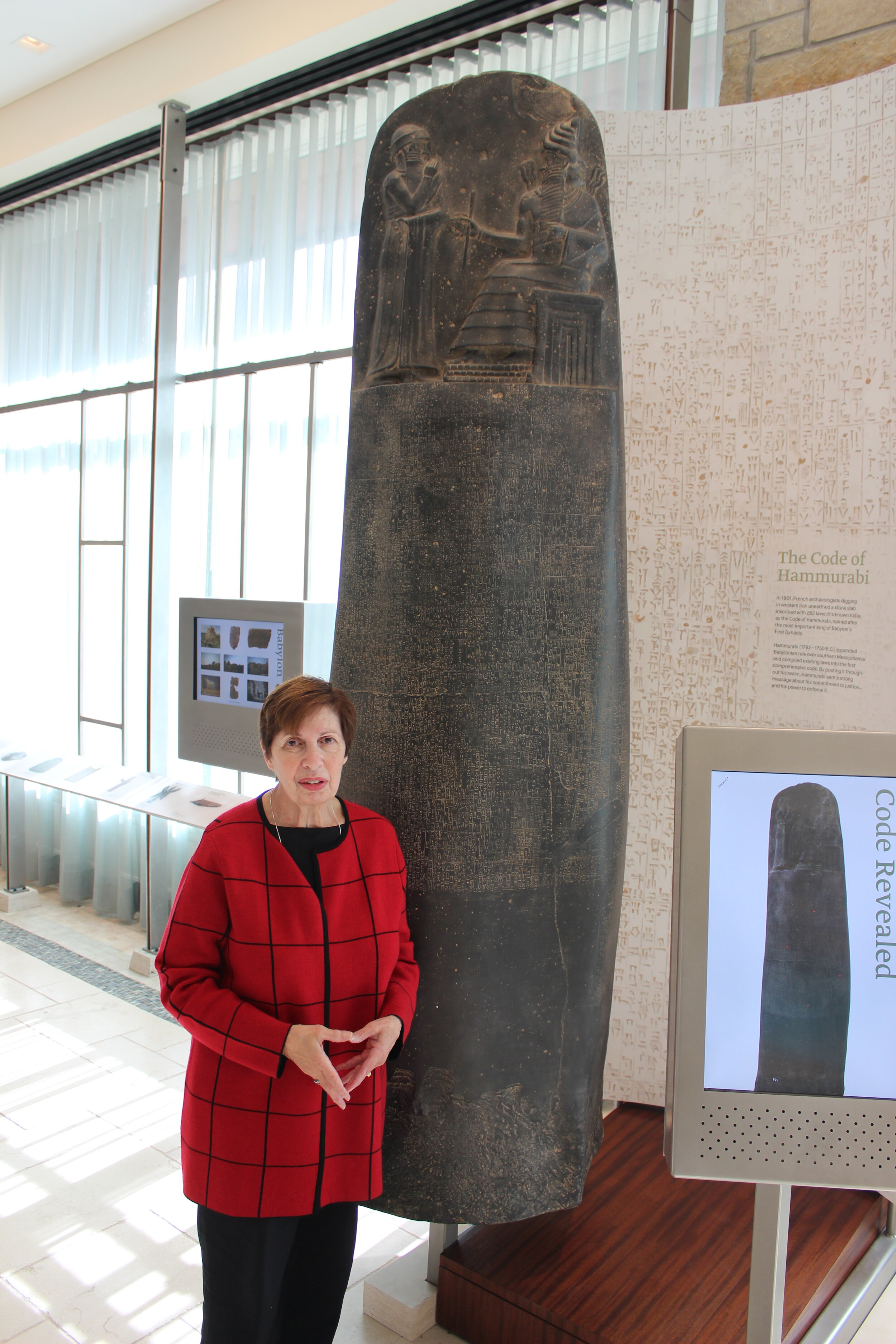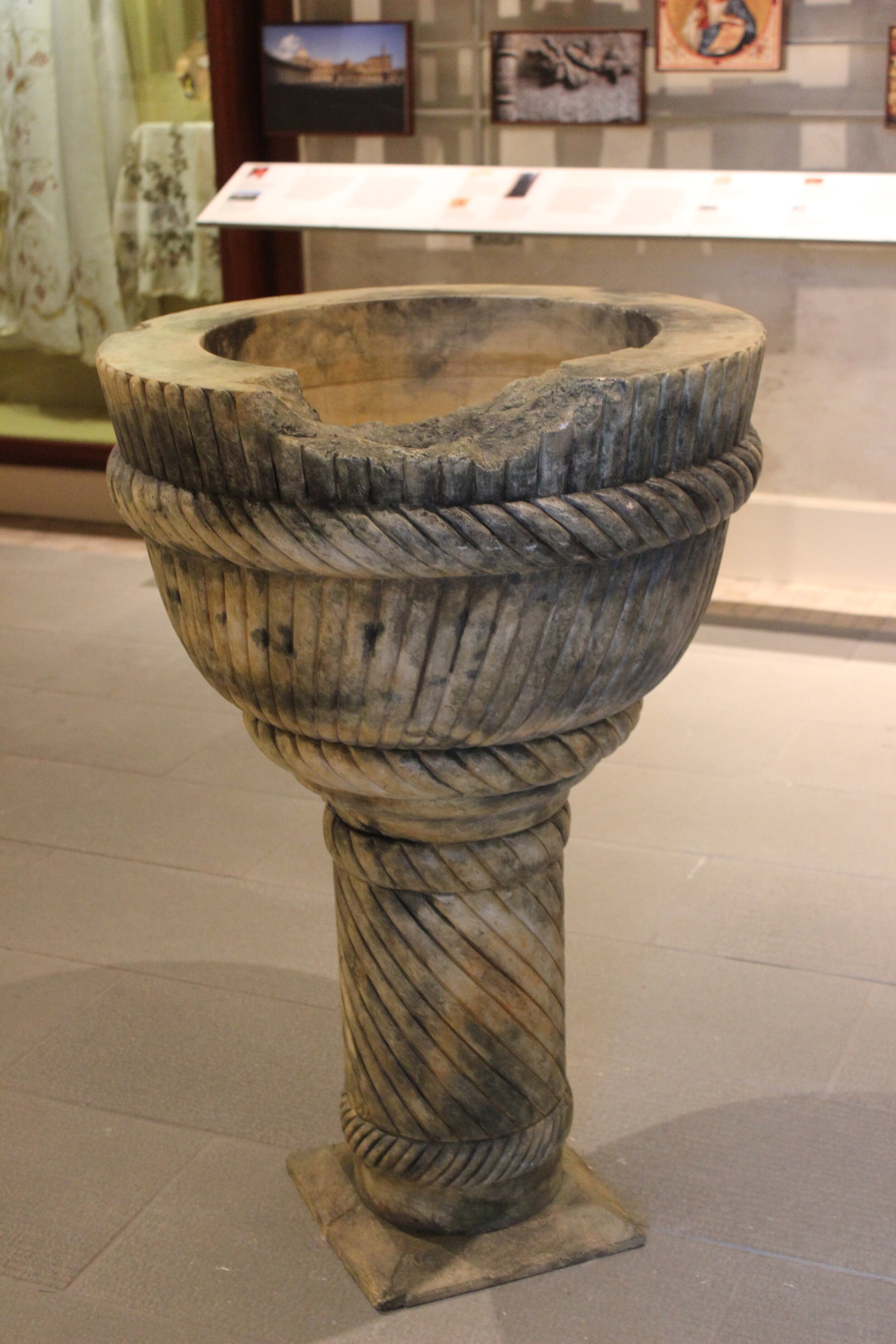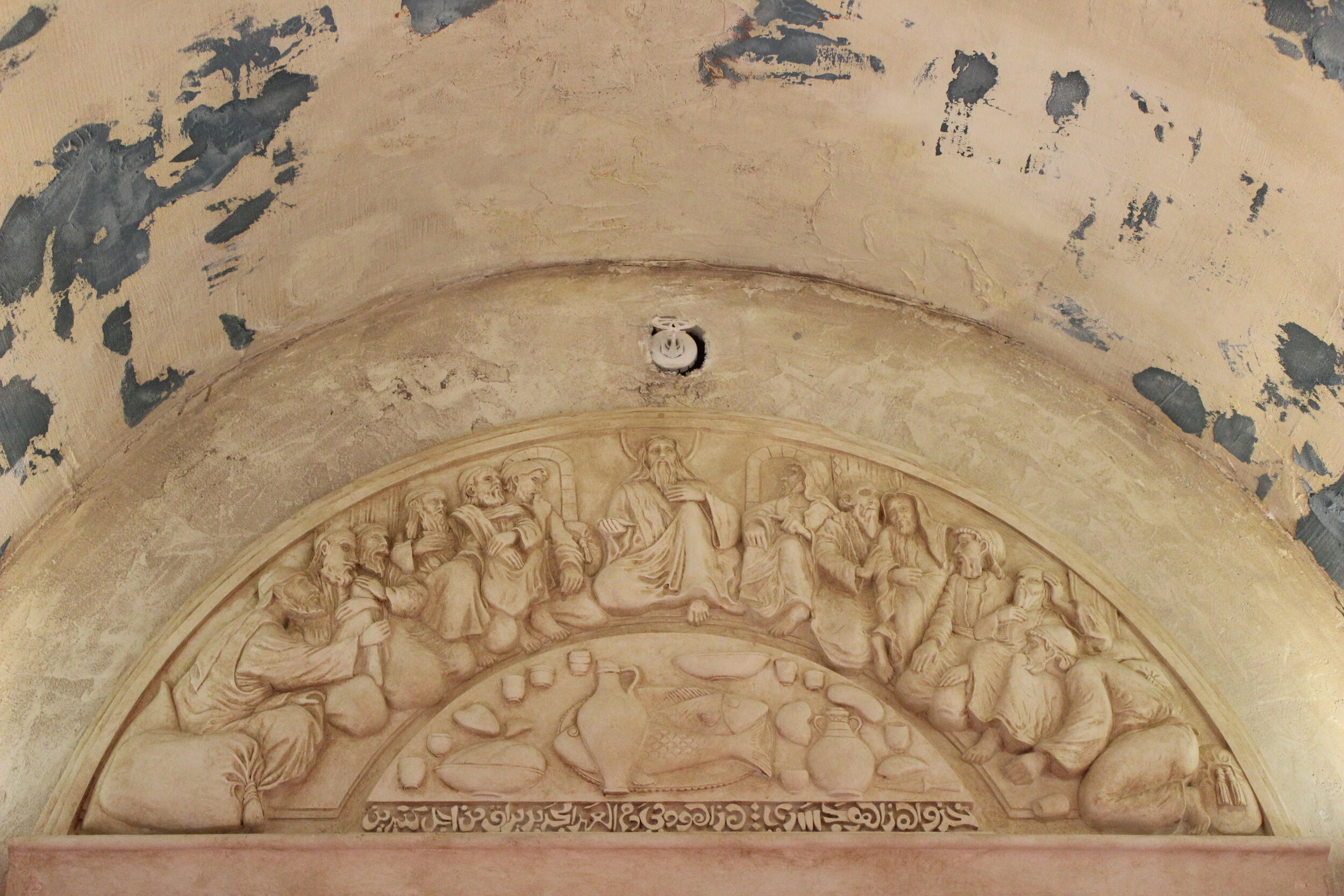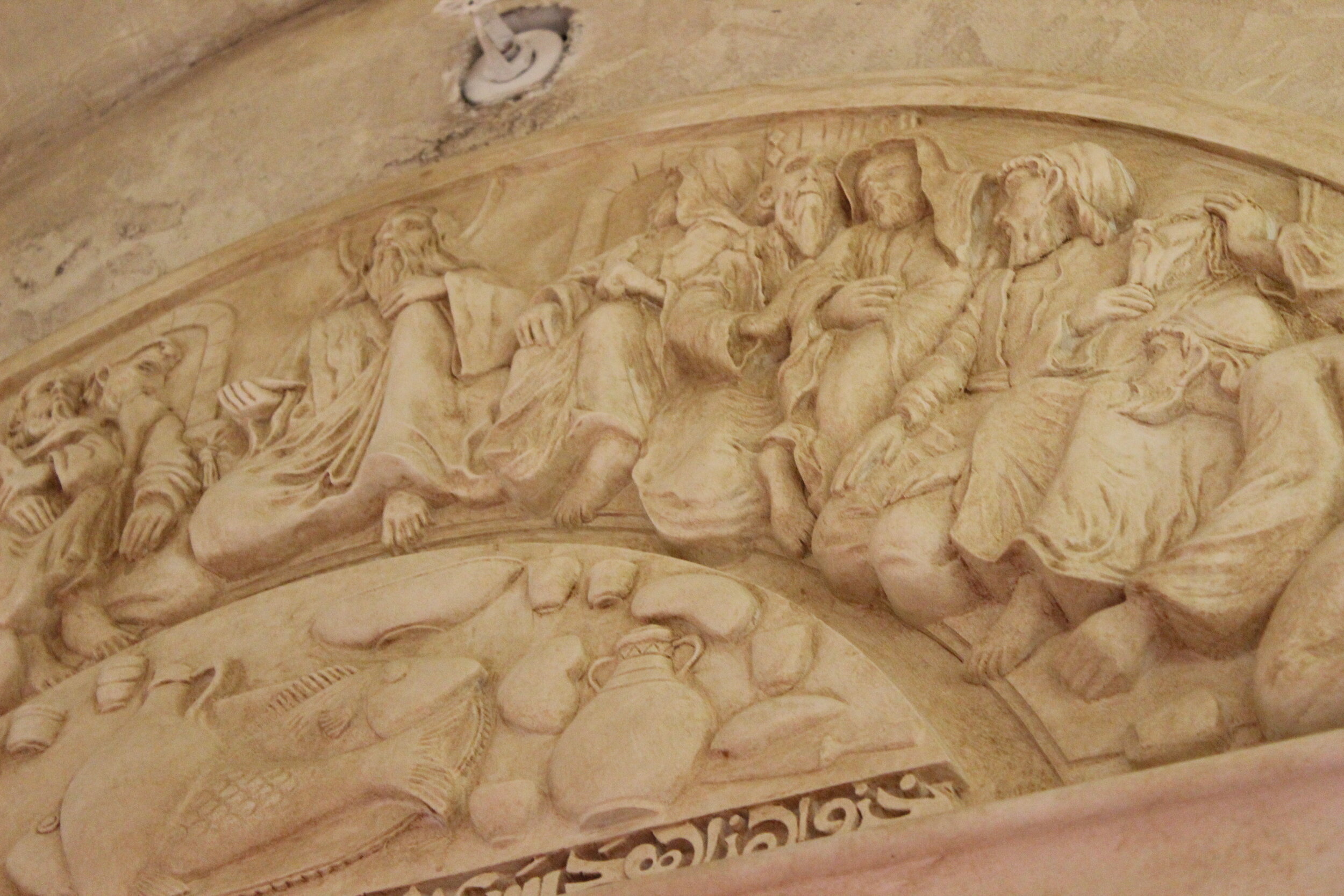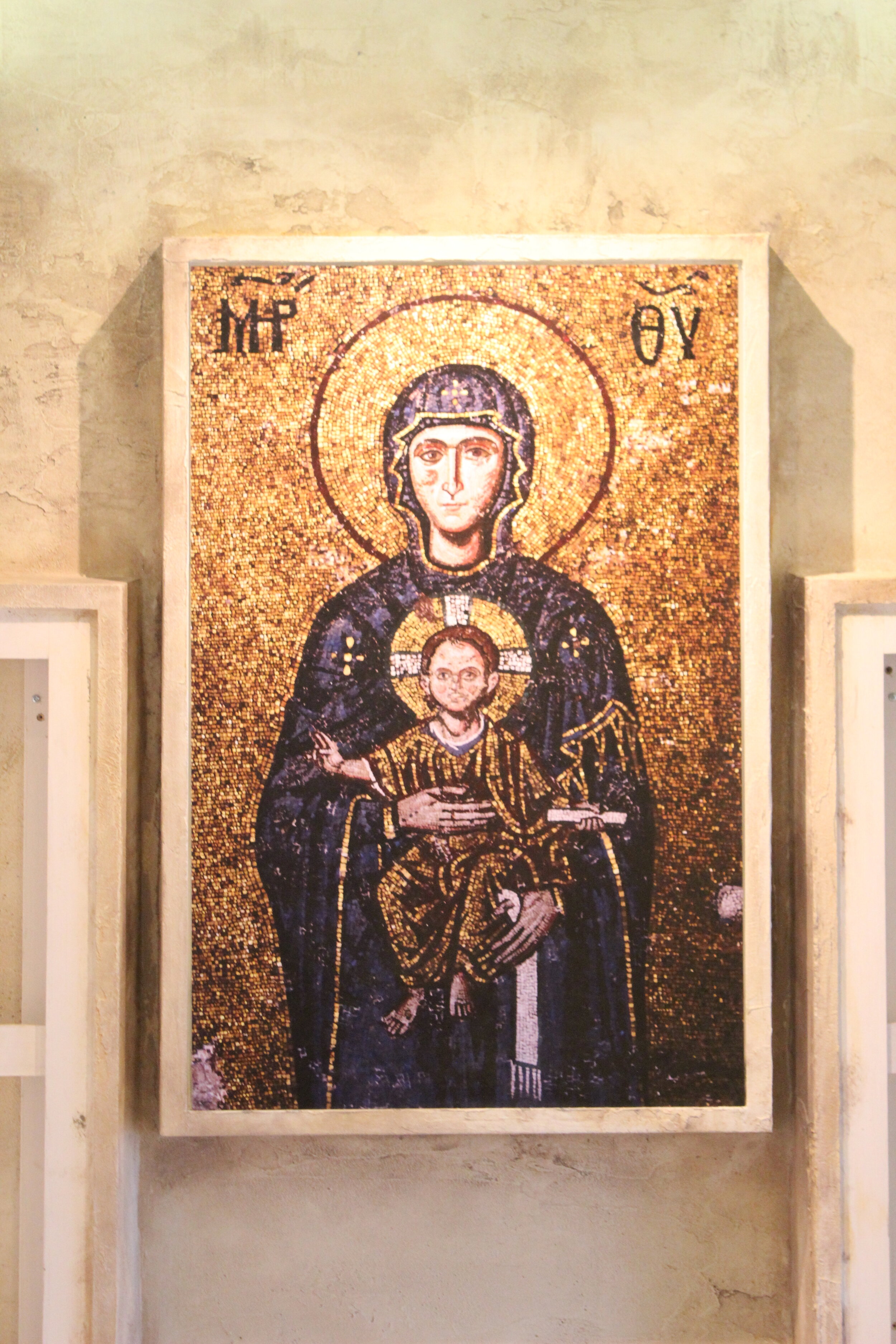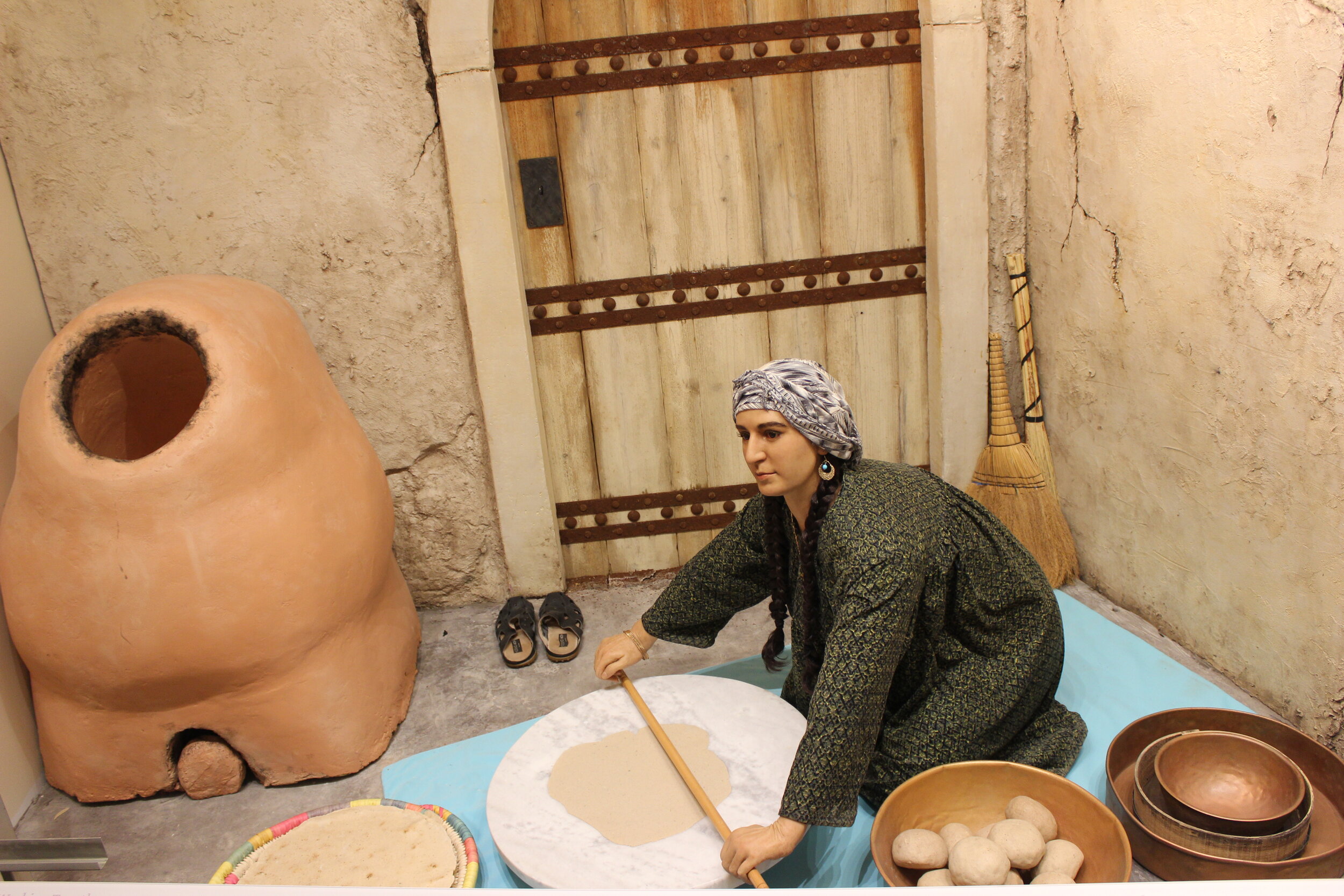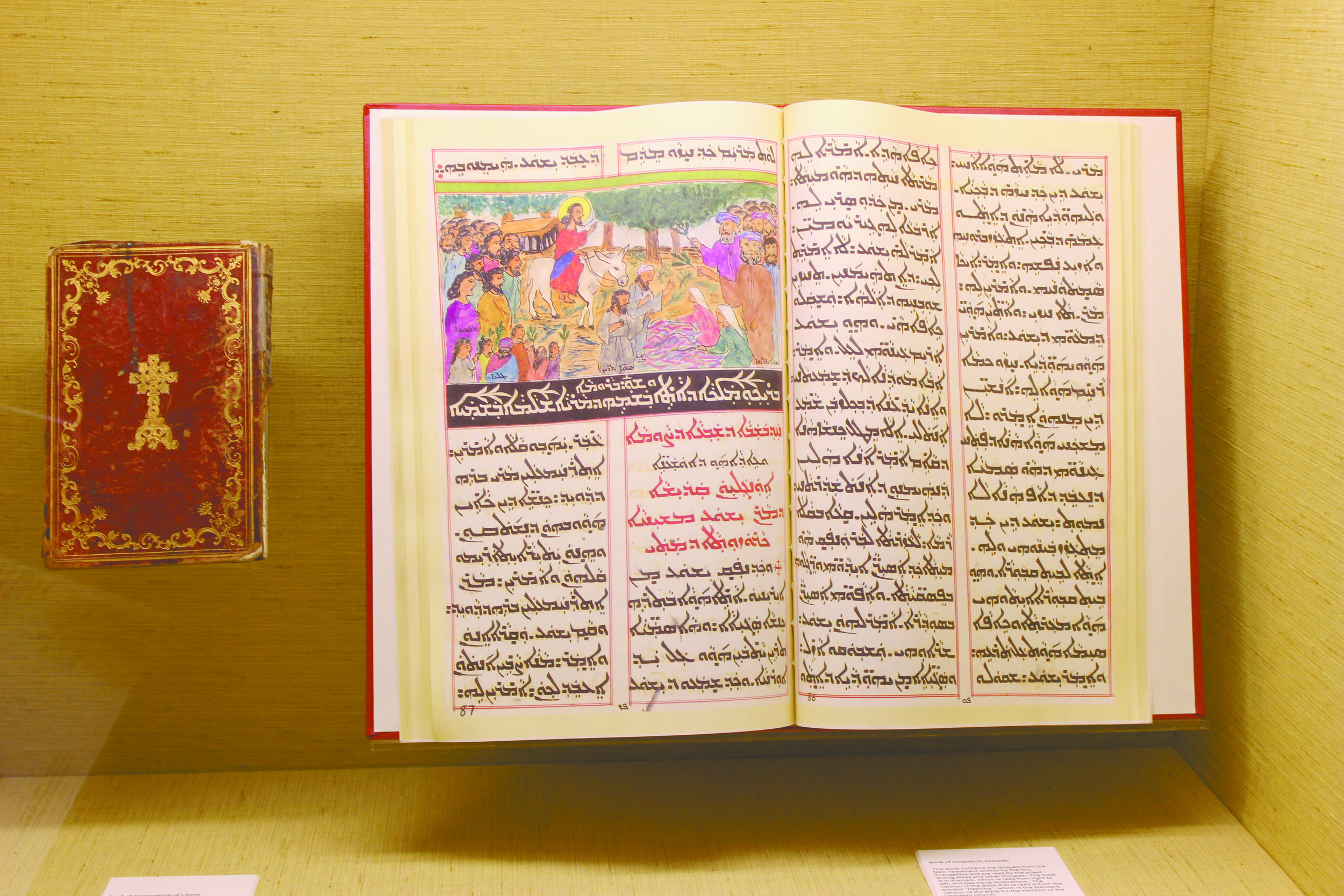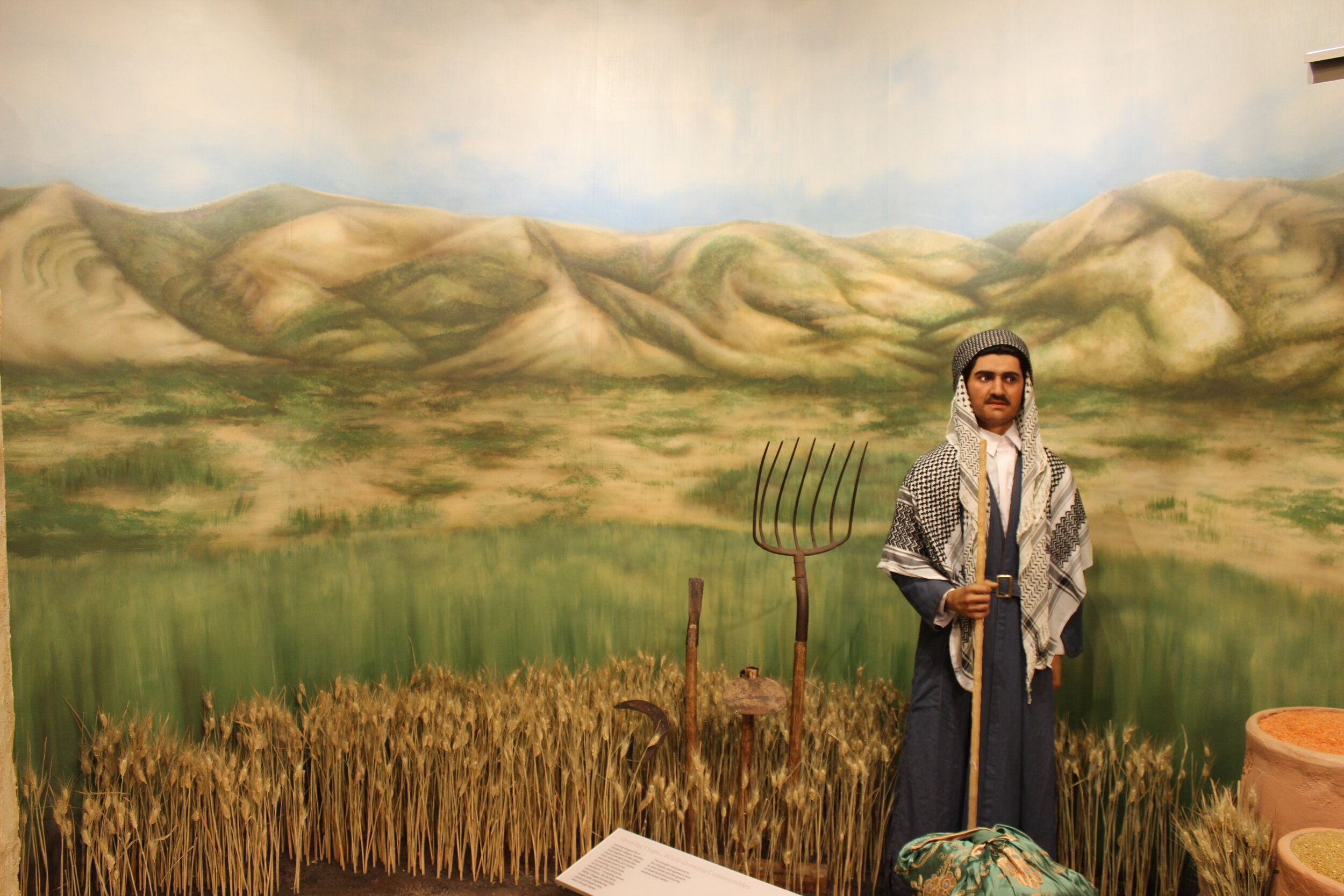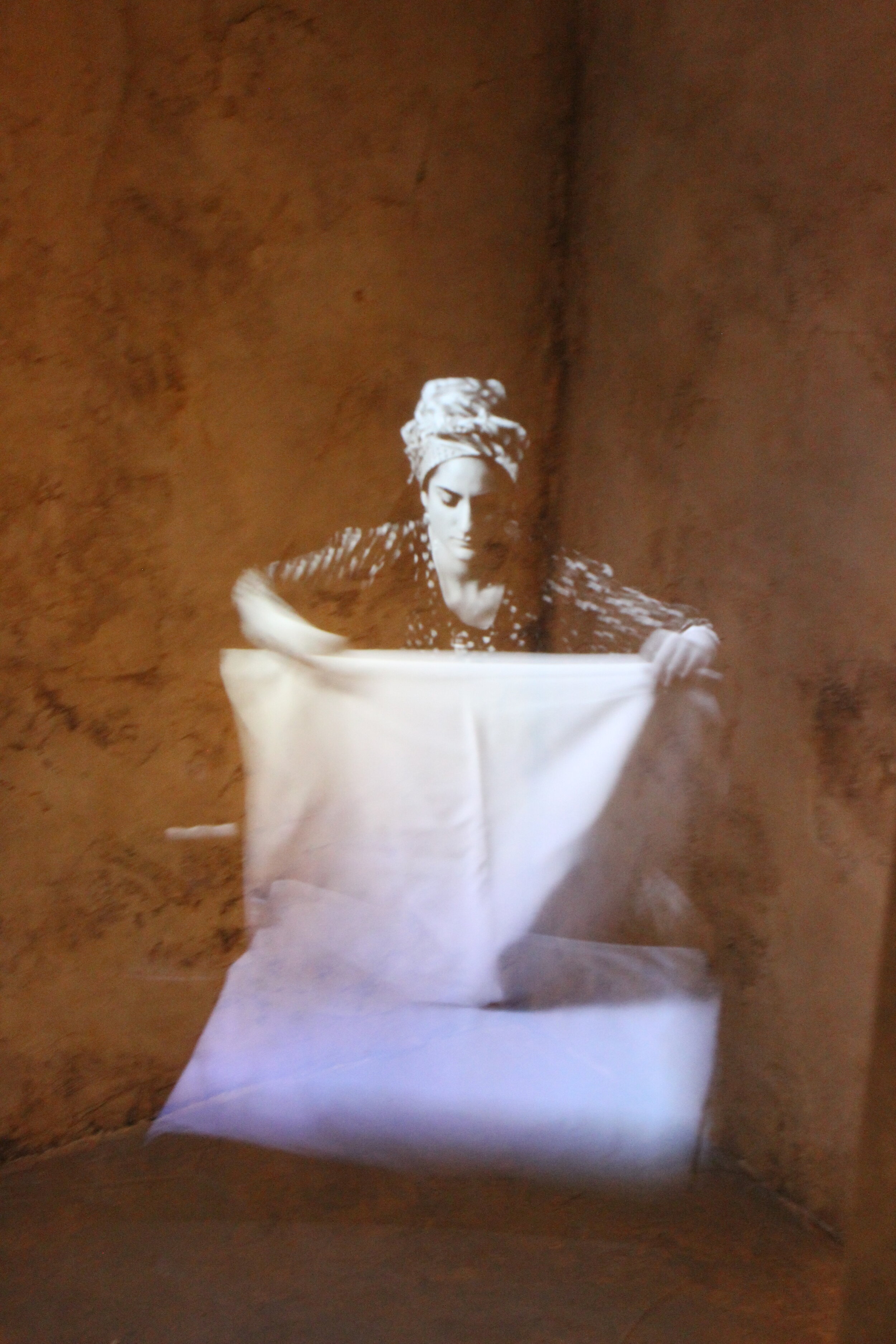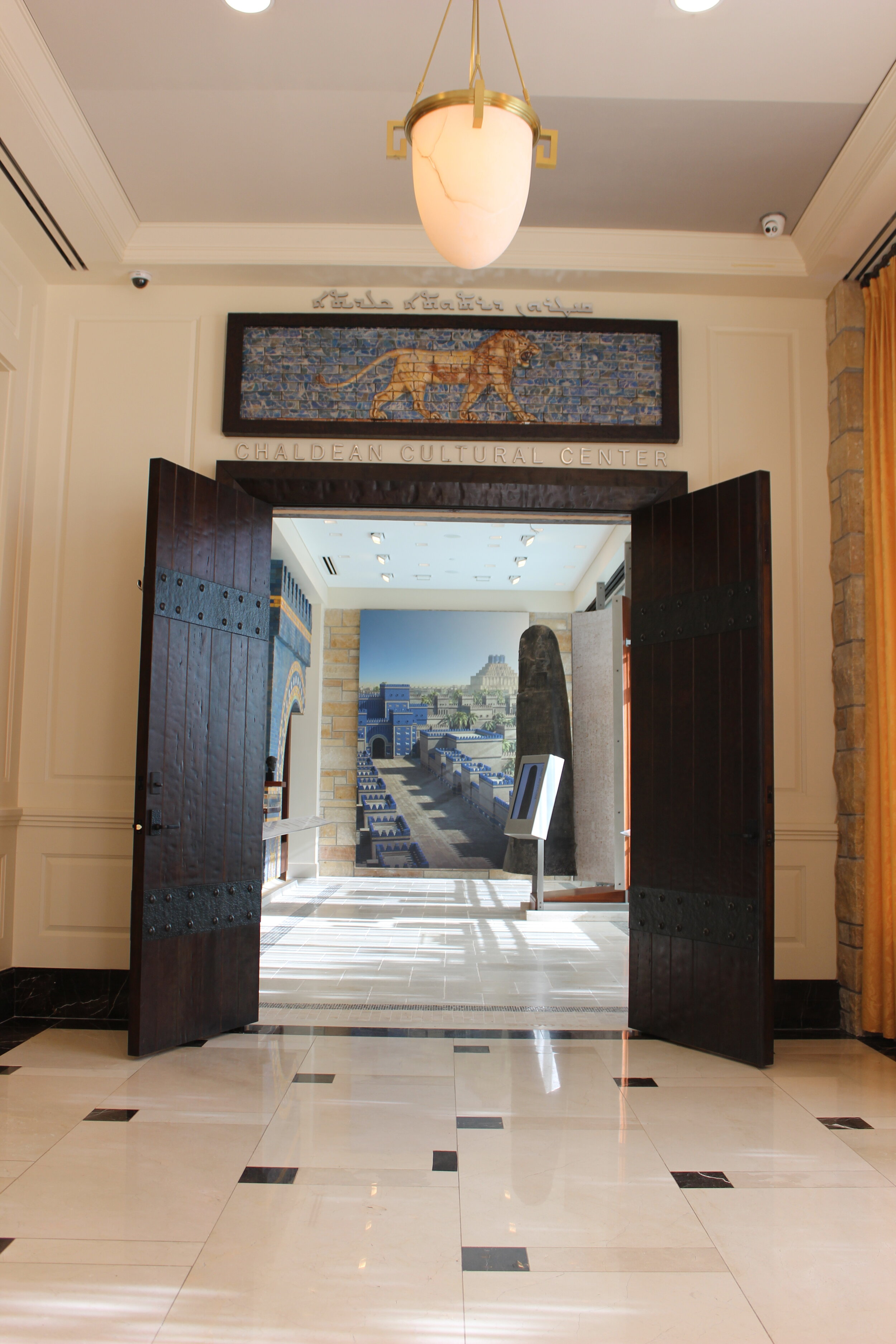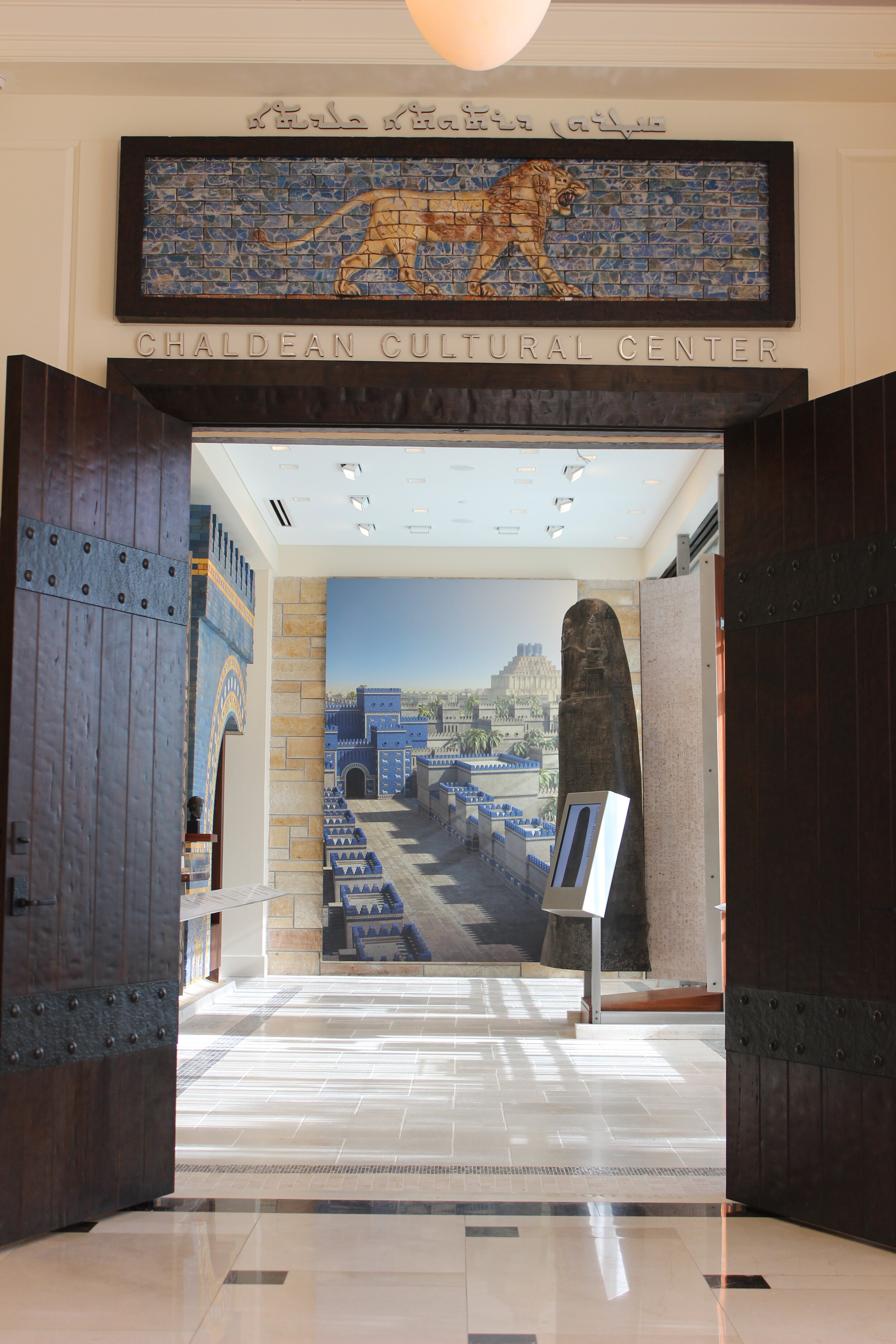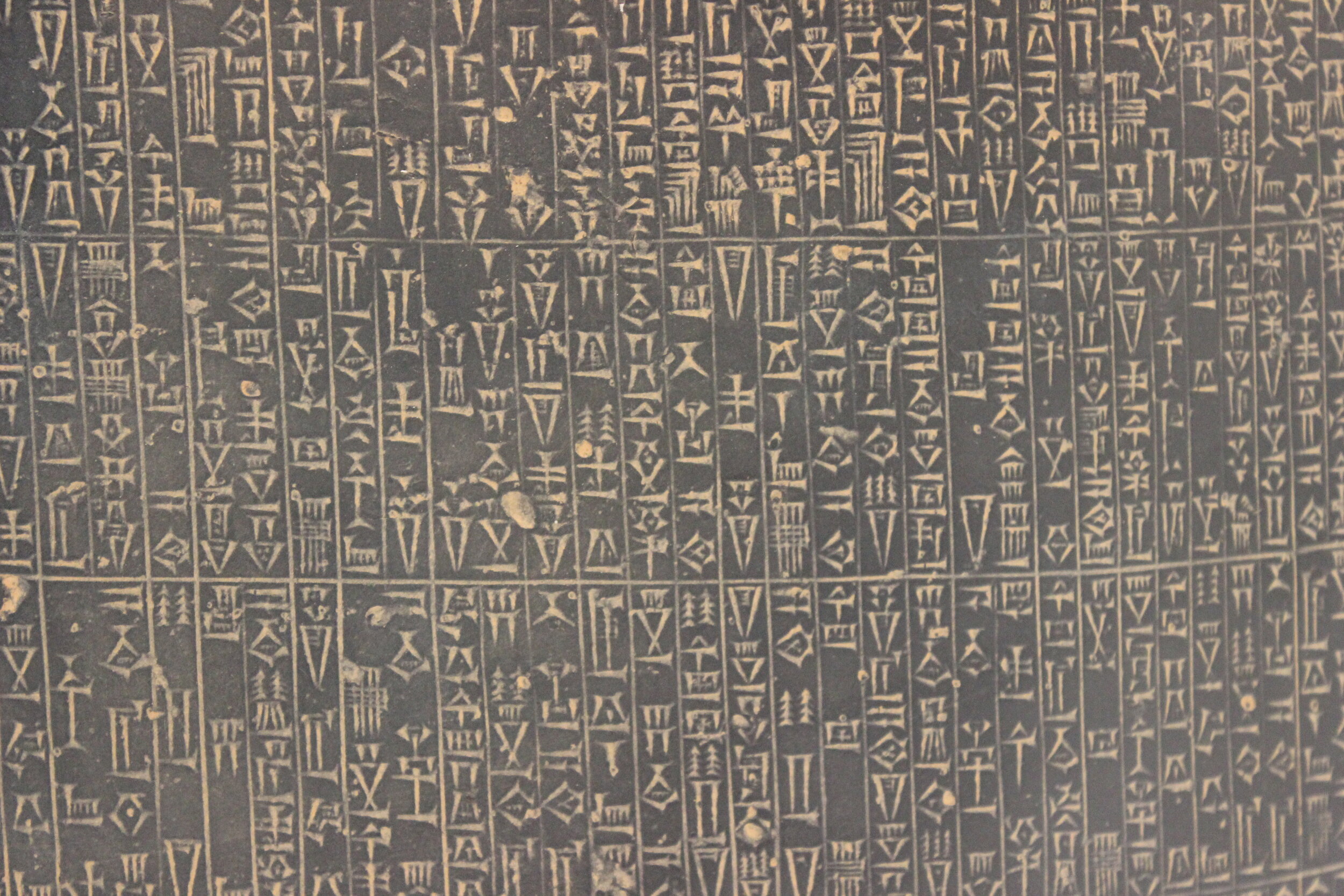A Gift to the Community
Chaldean Cultural Center is worth the wait
Bishop Francis Kalabat, Raad Kathawa, Bishop Ibrahim N. Ibrahim, Francis Boji (standing behind Bishop Ibrahim), Judy Jonna, Hani Mio, Victor Saroki and Hanna Shina take an early look.
By Vanessa Denha Garmo
Expected to open next month inside Shenandoah County Club, the Chaldean Cultural Center has been more than a decade in the making but it’s a museum that covers thousands of years of Chaldean history.
“We are a community with deep roots and a rich history,” said Francis Boji, chairman of the CCC board of directors. “The museum starts out 3300 Before Christ (B.C.) and it takes visitors through time periods and the progression of Chaldeans.”
Boji has been involved in the project since its inception working with Rosemary Antone, the original chairperson. “It’s unfortunate she passed before she could see it become a reality,” said Boji. “There has been so much detail involved in this project. We analyzed and checked every piece of history and every fact. We wanted to make sure we used every accurate word to describe our history.”
Over the nearly 14 years, several people have been actively working on the development of the museum including Executive Director Mary Romaya. “There are really layers and layers of information and subtleties that are contained within the museum,” she said. “In a docent-led tour, we will point out all of these features.”
For instance, covering the windows of the south wall in the ancient Mesopotamia Gallery is a seafoam-green drape made of a lightweight fabric designed to flow as it mimics the Tigris and Euphrates rivers. Along the perimeters are gold, olive green and cobalt blue tiles, the colors of ancient Babylon.
In that same room is the Ishtar Gate, Hammurabi’s Stele (Code of Laws) and a large mural of the Processional Way in Babylon.
On the archway leading from the Faith and Church Gallery to the Village Gallery is a sculpture of The Last Supper created by the fabricating company Life Formations. “It was designed to replicate The Last Supper sculpture at the Sacred Heart church in Telkaif,” said Romaya. “It is a sculpture that hangs on the altar of the church. Our sculpture is an authentic replica.”
It has been a collaborative effort from people inside and outside the Chaldean community. Each of the five galleries had its own curators to help design it. The curators for the Ancient Gallery were William and Elsie Peck, who had been the curators for the Ancient Near East Department of the DIA.
The curators for the Faith and Church Gallery were Deacon Khairy Foumia, Fr. Manuel Boji, Fr. Matthew Zetouna, and Dr. Amir Harrak, a professor of Syriac Studies at the University of Toronto.
The curators for the Village Gallery were Francis Boji, Galia Thomas, Khairy Foumia, Hanna Shina, Virjean Arabo and others.
The curators for the Journey to America Gallery were the children of the pioneers including Bob Dickow, Mike George, Pete Acho, Josephine Sarafa, Danny Lossia and Gene Matti.
“My favorite part is the Journey to America Gallery,” said Romaya. “I love seeing all these immigration documents and thinking about the lives of the individuals they represent. Think of all the emotions that these initial immigrants would have had, such as excitement of travel and a new adventure, but also sadness in leaving behind their family members and the lives they knew. I can also relate to the early grocery store featured in this gallery. It was typical of the corner grocery that so many of our fathers had and where we had our first jobs. The grocery business was part of our very existence even if we later branched out into other professions.”
The curators for the Today Gallery included the entire CCC Board of Directors and was spearheaded by Judy Jonna, the new board chair starting next month. Besides the exhibit of Today’s Children, there is also an exhibit honoring the Pioneers. “I had to facilitate the information that was given to me. I’m not an expert in any of these areas,” said Romaya, “so this museum is truly the work and effort of many people”.
The board commissioned work for talent from New York including museum writers, museum architects and media professionals with museum experience.
Sanan Media produced the interactive media and the films for the Cultural Center, working in parallel with the exhibit designers Saylor+Sirola.
“It was a great collaboration where we brainstormed on many exhibit and media ideas together,” said Kaya Sanan from Sanan Media. “We really enjoyed working with the directors, Josephine and Mary, with Rosemary and Francis, the board, the staff, the curators and the whole community. We were made to feel like family every step of the way and we certainly feel like family now.”
“We knew very little when we began this journey,” said Ken Saylor. “At the time David (Sirola) was re-reading Herodotus’ Histories and the name ‘Chaldean’ rang a bell. We checked the index, and there it was — an ancient people chronicled by Herodotus. We then had a beginning, along with a proper name and correct spelling to embark on the lengthy research process — discovering a rich and complex history from the ancient world to the present day.”
The exhibits were designed to be interactive. “With the Stele Interactive (Code Revealed), rather than making some general comments about Hammurabi’s laws we were excited to bring character-by-character accuracy in pinpointing specific laws on the Stele and translating them,” explained Sanan.
It involved hours of research and investigation to properly translate the laws, statements and words as well as knowing how to format and organize them.
“Even in reaching out to the curators at the Louvre, it wasn’t easy to get clear information. It took a bit of detective work to figure out how the Stele was designed,” said Sana. “We also weren’t sure how things wrapped around to the back, and discovered that individual laws did not wrap to the back. Although we knew the direction of writing was right to left, we didn’t know if the layout of the laws would be the same. Our major hint was the very last row of symbols on the back. In deciphering the location of the laws, it came down to finding recurring phrases, words and letters in the translation and phonetic translation.”
“As with many of our exhibition projects, our primary vision was attuned to executing the objectives and desires of our client – the Chaldean community,” said Saylor. “We began the design process years ago by holding numerous workshops and development meetings where we met amazing members and scholars from the local community and we brought additional experts in to help us refine our exhibition goals, artifact, image, media and text selections and develop the overall narrative … as well as to get our facts straight!”
The project was multifaceted for the architects. “One of the major themes we express and articulate throughout the exhibition is that language, faith and culture act as an ancient thread unifying the entire history of Chaldean culture,” said Saylor. “Weaving this thread through a relatively limited space, we hoped to create a rich and diverse experience for our guests from all age groups and cultural backgrounds.”
The desire was to employ an updated anthology of traditional museum presentation and display techniques and extend that visual and textual language into the 21st century. The display elements used in the Chaldeans in the Ancient World gallery were of a formal, traditional museum setting taken to the next level using enhanced content, contemporary media, graphic design, elegantly designed display systems and sophisticated lighting.
With the Babylon Interactive, they once again had to dig deep into each attribute of the culture, including medicine, arts, architecture, math and astronomy, by interpreting different objects. “It felt great to present realistic animations of Babylon, as well as detailed interpretations of different tablets,” said Sanan. “Language Interactive gives a taste of how Aramaic was formed and what languages it influenced, a letter at a time. Only three letters are active in the current version.”
It was imperative to display the importance of worship within the culture. In an interactive, visitors explore key moments of important worship events.
Modern projection techniques highlighting life in the early 20th century enabled the designers to show a village home as realistically as possible. They timed the media and fades such that faint images of the villagers appear and disappear magically in the middle of the home. Furthermore, they connected 20th century media with the current museum artifacts sitting on the shelves. Whenever villagers use an object, a comb, a pan, an iron, that specific artifact is highlighted in the museum.
In the gallery featuring old stores, photographs are brought to life by using the voices of many Chaldeans who worked at their parents’ stores in the 20th century. They explored the sights, sounds, smells, customers, coworkers and even robbers.
The Journey Gallery examines different migration periods by following the stories of four Chaldeans. Each story is very different, yet through the funny and sad nuances one understands what makes a Chaldean.
“Although we step through the history with the different galleries and we explore different aspects of the culture like worship, language and family, there is one thing that stood out when we were done with the media,” said Sanan. “It was the Chaldean person as a good human being.”
The CCC is currently going through many test runs with various groups. “We are testing the timing of the media exhibits to see if they operate as designed,” said Boji. “Each exhibit is timed to start when someone walks into the gallery and stop when they leave. We need to ensure they are working properly every time.”
Not only is the museum designed to preserve Chaldean history, it is built as a tourist attraction and a field trip destination. “We want our kids and grandkids to know our culture and our ancestors. We are from ancient Mesopotamia,” noted Boji. “We want our surrounding Jewish neighbors and all ethnicities to know us and our history.”
“This museum is very important because it chronicles the Chaldean story from ancient times to today,” said Romaya. “We need to preserve and protect our history, especially given the world conditions today. We want the next generation and subsequent generations of Chaldeans to value their unique place in history and to embrace all the wonderful aspects of our culture, namely Faith, Family, Friends and Food.”
“This project has become very personal for both of us. When we started working with the small group of Chaldean volunteers, they initially hoped to create a small community center,” said Saylor. “Along the way that idea has matured and grown into a vibrant cultural center that aspires to world-class museum status.”
Over the course of nearly a decade there have been many ups and downs. “We have shared the tragedies of the Iraq War, witnessed the economy fail, lost several of our core group, supported each other through personal travails and, on a brighter note, celebrated our incremental progress and success over some of the most delicious Chaldean meals imaginable,” said Saylor. “In short, we worked like a family of friends. It will be a bittersweet moment when the project is finally finished and we have to say goodbye.”
Catholic and public schools alike could benefit from touring the center. “I think it’s important to learn about history and culture, especially if it’s our own, or if it’s the history and culture of our friends and neighbors,” said Fr. Jeff Day, pastor of St. Fabian Church and School. “This was actually one of the reasons I decided to take the after-school Chaldean classes at St. Fabian. Not only am I learning the language but I’m also learning about Chaldean history and culture.”
“I think it is important for students to learn about all cultures and especially because of the higher Chaldean population in our community,” said Sharon Szuba, principal of St. Fabian. “As educators, it is helpful for us to have an awareness of the history and culture of our diverse population.”
“We wanted to proclaim to local, national and international audiences,” said Saylor, “here are the Chaldeans that you have read or heard about. Please come by our cultural center and learn about this extraordinary ancient culture, their maintenance of faith, the plight of the Chaldean diaspora, their entrepreneurial spirit and to celebrate their vibrant and spirited contemporary citizens.”
It’s a museum where all are welcome. “I am Chaldean and proud of it,” said Boji. “I am proud of my heritage and I enjoy educating others about Chaldeans. We are a minority in a country made of 97 percent Muslims. People think we are Arab because we come from an Arabic Islamic country but we have a different language, heritage and our own religion. We lost so much of our belongings and artifacts in all the wars in Iraq. This cultural center allows us to preserve our history.”
“It has been a privilege to work on this museum and I have learned so much more about our wonderful Chaldean heritage and culture,” said Romaya. “It is certainly gratifying to see the museum just about finished and ready to open. The hard work and effort from so many is about to become a reality. It’s like sending a child off to college; it can be bittersweet. You’re happy he’s finally grown and now ready to be on his own, but you miss him.”
When talking to all those involved, there is a sense of gratitude for the opportunity. “First and foremost, we would like to thank everyone involved and raise a glass to the faith and generosity of the community that brought the Chaldean Cultural Center to life,” said Saylor. “The larger community should be very proud of its long history and achievements on display and should empower the CCC and its mission to preserve the Chaldean legacy, as so many fragile histories have been lost over time. It is the go-to place for all things Chaldean and for many, many years to come.”
